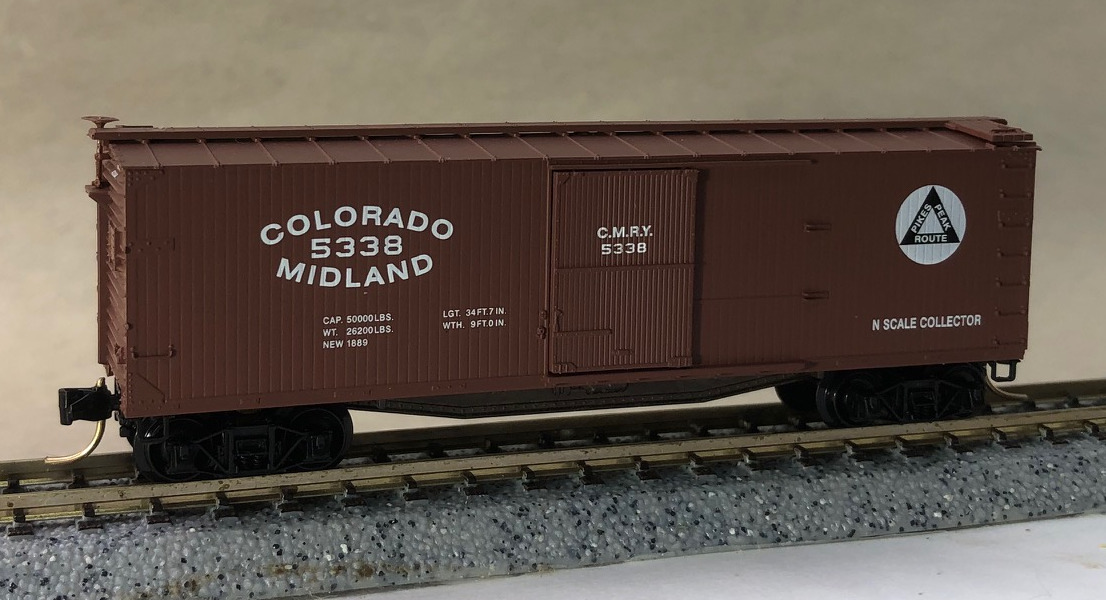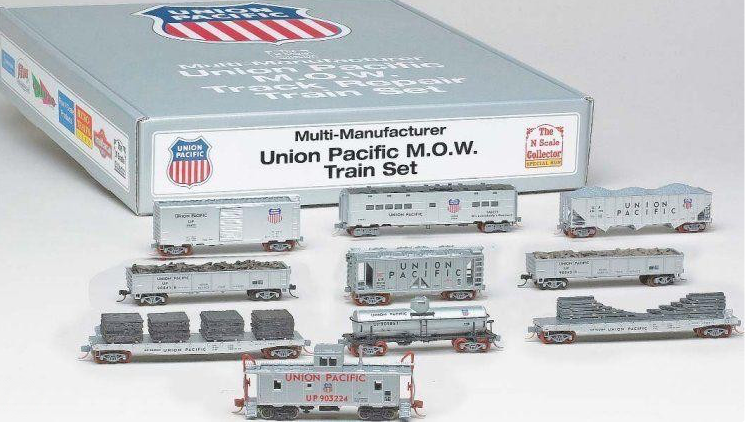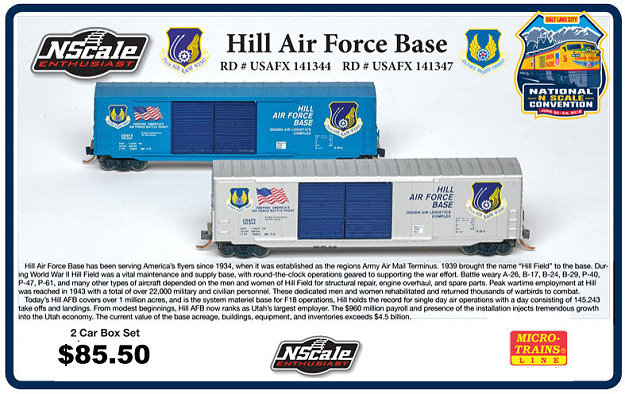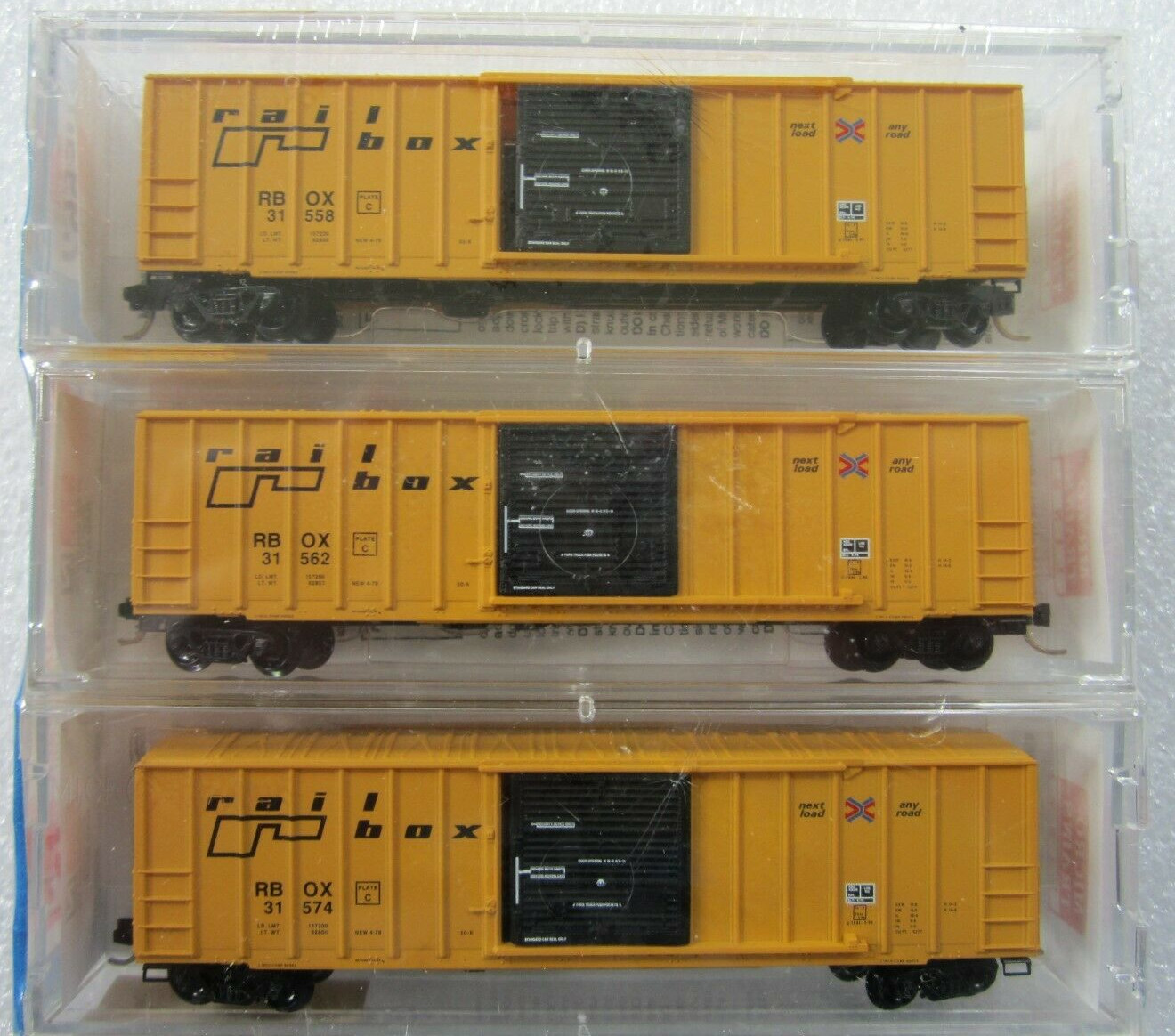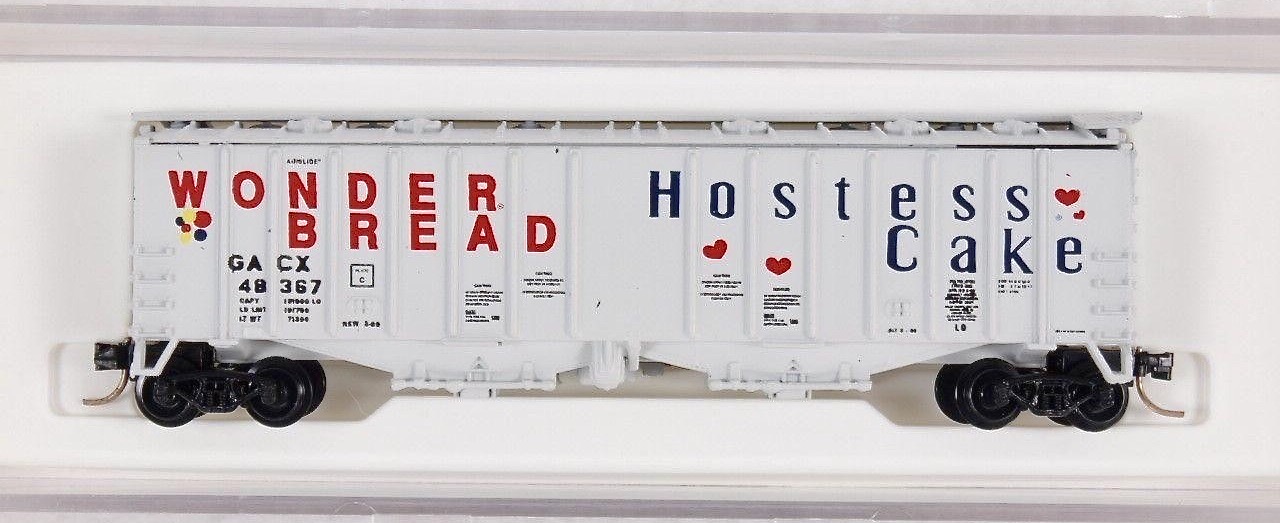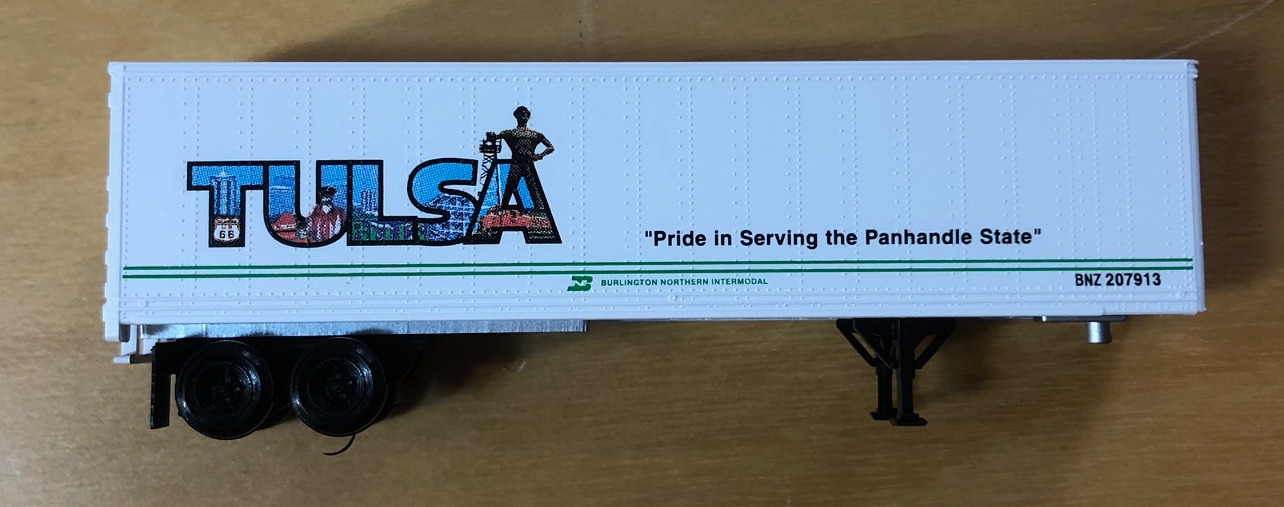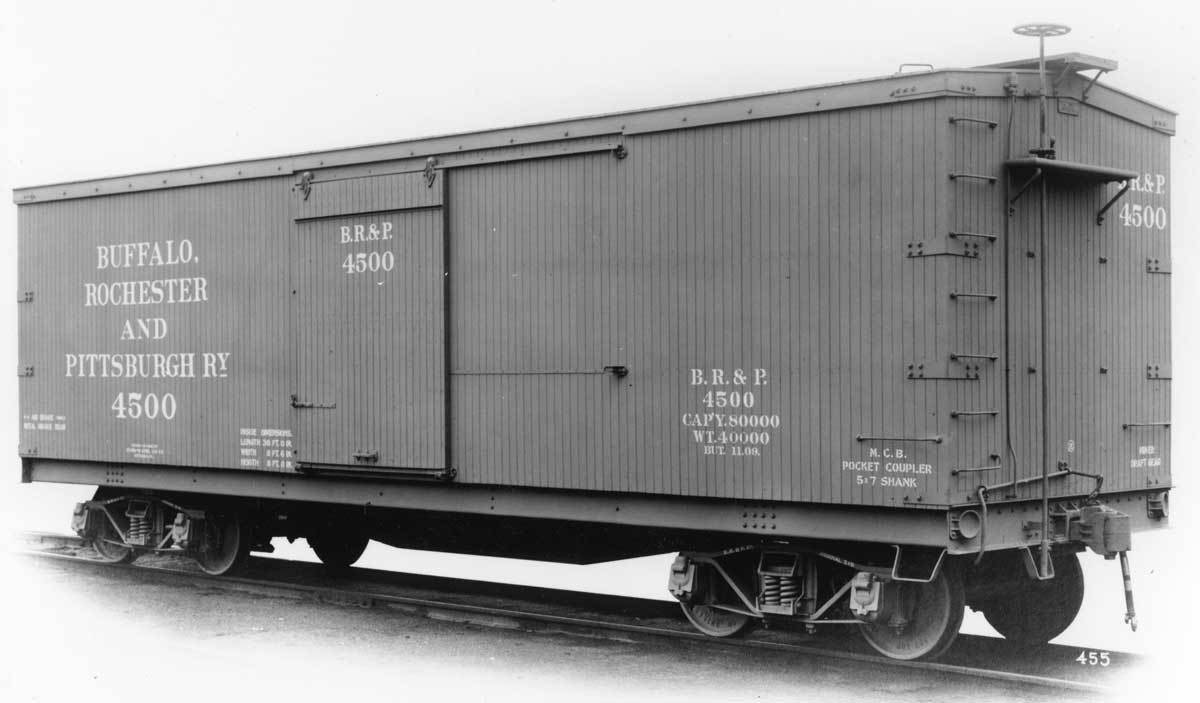Micro-Trains - NSC 96-46 - Boxcar, 40 Foot, Double Wood Sheathed - Colorado Midland - 5338
| Commissioned By | Denver Area N Scale (DANS) |
| Production Type | Special Run |
| Stock Number | NSC 96-46 |
| Original Retail Price | $16.65 |
| Brand | Micro-Trains |
| Manufacturer | Micro-Trains Line |
| Body Style | Micro-Trains 039 Boxcar 40 Foot Wood Sheated, Vertical Brake Wheel |
| Prototype Vehicle | Boxcar, 40 Foot, Double Wood Sheathed (Details) |
| Road or Company Name | Colorado Midland (Details) |
| Road or Reporting Number | 5338 |
| Paint Color(s) | Dark Brown |
| Print Color(s) | White |
| Coupler Type | MT Magne-Matic Knuckle |
| Coupler Mount | Truck-Mount |
| Wheel Type | Injection Molded Plastic |
| Wheel Profile | Standard |
| Multipack ID Number | NSC 96-49 |
| Release Date | 1996-01-01 |
| Item Category | Rolling Stock (Freight) |
| Model Type | Boxcar |
| Model Subtype | 40 Foot |
| Model Variety | Wood, Vertical Brake Wheel |
| Prototype Region | North America |
| Prototype Era | NA Era II: Late Steam (1901 - 1938) |
| Scale | 1/160 |
Specific Item Information:
Part of DANS (Denver Area N Scale Club) set.
Prototype History:
Double sheathed all-wood boxcars in 34', 36' or 40' length were built with trussrods into the 1900's. By about 1910-15 cars often were being built of wood but with steel underframes. BTW many early boxcars were only about 8-1/2' high, though taller 10' cars were beginning to be built by the WW1 era (like the USRA wood boxcar) but that didn't become the norm until the late 1930's.
Later in the 20's-30's, some cars were built with double or single sheathed woodsides but steel underframe, roof and ends. In the later 30's into the 40's some older cars built with wood except for the steel underframes were rebuilt with steel ends and roofs. Some of these cars with steel roof and ends (either new or rebuilt) lasted into the 1960's.
During WW2, steel was in short supply, so some new boxcars were built with steel roof and ends, but wood sides. These too sometimes lasted into the "diesel era", although many were rebuilt with steel sides after the war.
Later in the 20's-30's, some cars were built with double or single sheathed woodsides but steel underframe, roof and ends. In the later 30's into the 40's some older cars built with wood except for the steel underframes were rebuilt with steel ends and roofs. Some of these cars with steel roof and ends (either new or rebuilt) lasted into the 1960's.
During WW2, steel was in short supply, so some new boxcars were built with steel roof and ends, but wood sides. These too sometimes lasted into the "diesel era", although many were rebuilt with steel sides after the war.
Road Name History:
 The CM was established in 1883 with plans to build a standard gauge line west from Colorado Springs, Colorado to the mining centers of Leadville then over the continental divide at what would become known as Hagerman Pass to Glenwood Springs and Grand Junction then on to connections with the Central Pacific at Ogden, Utah. Unfortunately, they would only get as far as Grand Junction and its interchange with the Denver & Rio Grande – CM’s arch-competitor. The completion of the Busk-Ivanhoe Tunnel lowered the summit of the line but it still included a 20 mile 3% grade on the eastbound climb to the tunnel. The line from Colorado Springs to Divide had segments of 4% grade and many tight curves. Much of the route was above 9,000 feet in elevation and blanketed in snow until June of each year. A blizzard in 1899 closed Hagerman Pass for 77 days. Westbound through traffic was handed over to the Rio Grande at Grand Junction but corresponding eastbound through traffic was almost non-existent since it could stay on the Rio Grande to reach most of the same places. Late in 1917, the USRA took control of the railroads due to the First World War. Much of the east-west traffic through Colorado was diverted on to the CM between Colorado Springs and Grand Junction. CM was not built for those traffic levels and immediately bogged down. In response, USRA diverted nearly all traffic off the CM and onto the Rio Grande, leaving just a bit of local business. It wasn’t enough to keep the operation going and in 1918, the Colorado Midland applied to abandon much of the railroad. Much of the line east of Divide was sold to the Midland Terminal Railroad and west of Divide it was abandoned.
The CM was established in 1883 with plans to build a standard gauge line west from Colorado Springs, Colorado to the mining centers of Leadville then over the continental divide at what would become known as Hagerman Pass to Glenwood Springs and Grand Junction then on to connections with the Central Pacific at Ogden, Utah. Unfortunately, they would only get as far as Grand Junction and its interchange with the Denver & Rio Grande – CM’s arch-competitor. The completion of the Busk-Ivanhoe Tunnel lowered the summit of the line but it still included a 20 mile 3% grade on the eastbound climb to the tunnel. The line from Colorado Springs to Divide had segments of 4% grade and many tight curves. Much of the route was above 9,000 feet in elevation and blanketed in snow until June of each year. A blizzard in 1899 closed Hagerman Pass for 77 days. Westbound through traffic was handed over to the Rio Grande at Grand Junction but corresponding eastbound through traffic was almost non-existent since it could stay on the Rio Grande to reach most of the same places. Late in 1917, the USRA took control of the railroads due to the First World War. Much of the east-west traffic through Colorado was diverted on to the CM between Colorado Springs and Grand Junction. CM was not built for those traffic levels and immediately bogged down. In response, USRA diverted nearly all traffic off the CM and onto the Rio Grande, leaving just a bit of local business. It wasn’t enough to keep the operation going and in 1918, the Colorado Midland applied to abandon much of the railroad. Much of the line east of Divide was sold to the Midland Terminal Railroad and west of Divide it was abandoned.

Brand/Importer Information:
Micro-Trains is the brand name used by both Kadee Quality Products and Micro-Trains Line. For a history of the relationship between the brand and the two companies, please consult our Micro-Trains Collector's Guide.
Manufacturer Information:
 Micro-Trains Line split off from Kadee Quality Products in 1990. Kadee Quality Products originally got involved in N-Scale by producing a scaled-down version of their successful HO Magne-Matic knuckle coupler system. This coupler was superior to the ubiquitous 'Rapido' style coupler due to two primary factors: superior realistic appearance and the ability to automatically uncouple when stopped over a magnet embedded in a section of track. The success of these couplers in N-Scale quickly translated to the production of trucks, wheels and in 1972 a release of ready-to-run box cars.
Micro-Trains Line split off from Kadee Quality Products in 1990. Kadee Quality Products originally got involved in N-Scale by producing a scaled-down version of their successful HO Magne-Matic knuckle coupler system. This coupler was superior to the ubiquitous 'Rapido' style coupler due to two primary factors: superior realistic appearance and the ability to automatically uncouple when stopped over a magnet embedded in a section of track. The success of these couplers in N-Scale quickly translated to the production of trucks, wheels and in 1972 a release of ready-to-run box cars.
Micro-Trains Line Co. split off from Kadee in 1990 to form a completely independent company. For this reason, products from this company can appear with labels from both enterprises. Due to the nature of production idiosyncrasies and various random factors, the rolling stock from Micro-Trains can have all sorts of interesting variations in both their packaging as well as the products themselves. When acquiring an MTL product it is very important to understand these important production variations that can greatly enhance (or decrease) the value of your purchase.
Please consult our Micro-Trains Collector's Guide

Micro-Trains Line Co. split off from Kadee in 1990 to form a completely independent company. For this reason, products from this company can appear with labels from both enterprises. Due to the nature of production idiosyncrasies and various random factors, the rolling stock from Micro-Trains can have all sorts of interesting variations in both their packaging as well as the products themselves. When acquiring an MTL product it is very important to understand these important production variations that can greatly enhance (or decrease) the value of your purchase.
Please consult our Micro-Trains Collector's Guide
Item created by: gdm
on 2017-08-04 13:47:57
Last edited by: Lethe on 2020-05-07 00:00:00
If you see errors or missing data in this entry, please feel free to log in and edit it. Anyone with a Gmail account can log in instantly.
Last edited by: Lethe on 2020-05-07 00:00:00
If you see errors or missing data in this entry, please feel free to log in and edit it. Anyone with a Gmail account can log in instantly.


